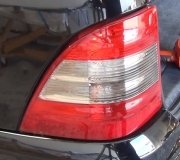If you've confirmed that the fuse is good and haven't yet checked the light bulbs, it's a good idea to start by inspecting the light bulbs themselves. If you find that the light bulbs are indeed in working condition, there are a few other components you can check to diagnose the issue with your backup lights on your 1989 Ford Bronco:
Backup Light Switch: The backup light switch is located on or near the transmission. It's responsible for sending a signal to the backup lights when the vehicle is shifted into reverse. If the switch is faulty, it may not be sending the signal to illuminate the lights. You can try locating the switch and testing it for continuity or replacing it if necessary.
Wiring and Connections: Check the wiring and connections leading to the backup lights. Look for any damaged or corroded wires, loose connections, or bad grounds. A break or poor connection in the wiring can prevent the current from reaching the lights.
Multifunction Switch: On some vehicles, the backup light circuit is controlled by the multifunction switch on the steering column. This switch controls various functions, including turn signals and high beams. If the switch is faulty, it might not be sending the signal to the backup lights.
Backup Light Relay (if equipped): Some vehicles have a relay that controls the backup lights. Check if your Bronco has a relay for the backup lights and ensure it's working properly.
Voltage Test: If you have access to a multimeter, you can perform a voltage test at the backup light sockets to check if power is reaching the bulbs when the vehicle is in reverse. This can help you determine if the issue is with the wiring or components upstream.
Body Control Module (BCM): On some newer vehicles, the BCM may play a role in controlling exterior lighting functions. However, in a 1989 Ford Bronco, this may not apply.
SPONSORED LINKS
Tuesday, July 14th, 2009 AT 3:14 AM




